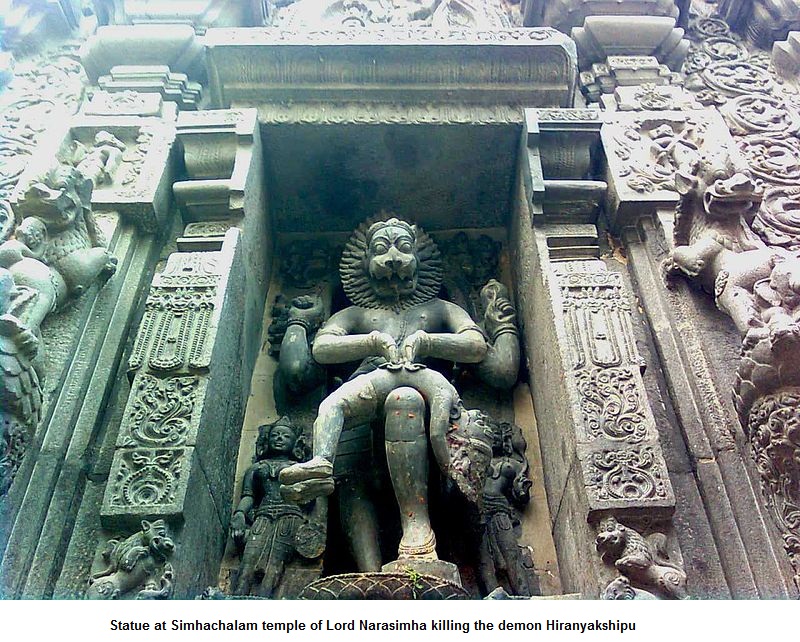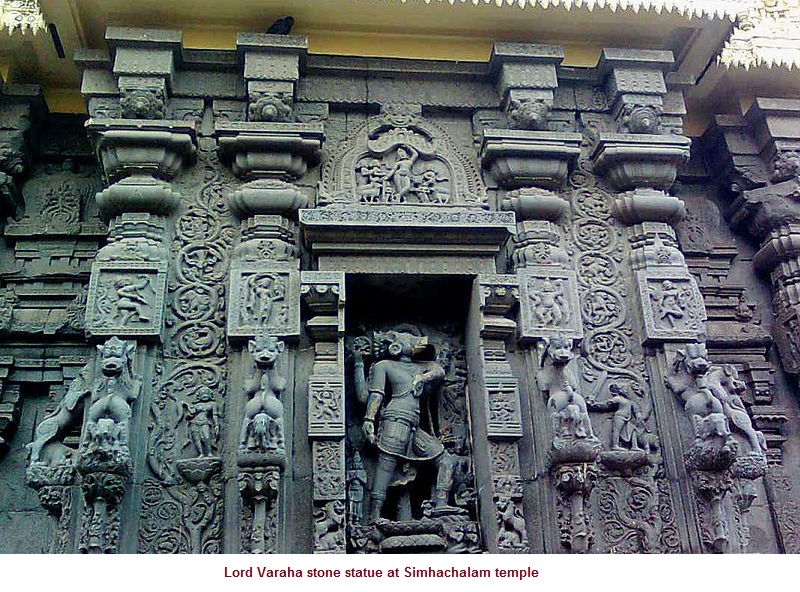 Hiranyakasipu was a Rakshasa king and a reincarnation of one of Vishnu's Dwarapalakas (gatekeepers) in Vaikuntha (heaven). The other palaka was born as his brother Hiranyaaksha. The gatekeepers, Jaya and Vijaya, were cursed by Sanaka, Sanandana, Sanathkumara, and Sanathsujatha because the gatekeepers did not allow these four to take darshan of Mahavishnu. As a result, the gatekeepers were reincarnated three times. Hiranyakasipu decided to perform austerities (tapasya) to appease Lord Brahma, which would allow him to become immortal. However, Lord Brahma said that it was not possible.then brahma give a bhoon to hiranyakashaka that was if anybody try to kill you they must be want to kill you without placing on land.so it must become secret.that's why he become so dare anybody never kill him.
Hiranyakasipu was a Rakshasa king and a reincarnation of one of Vishnu's Dwarapalakas (gatekeepers) in Vaikuntha (heaven). The other palaka was born as his brother Hiranyaaksha. The gatekeepers, Jaya and Vijaya, were cursed by Sanaka, Sanandana, Sanathkumara, and Sanathsujatha because the gatekeepers did not allow these four to take darshan of Mahavishnu. As a result, the gatekeepers were reincarnated three times. Hiranyakasipu decided to perform austerities (tapasya) to appease Lord Brahma, which would allow him to become immortal. However, Lord Brahma said that it was not possible.then brahma give a bhoon to hiranyakashaka that was if anybody try to kill you they must be want to kill you without placing on land.so it must become secret.that's why he become so dare anybody never kill him.
 Hiranyakasipu's son Prahlada was a devotee of Lord Narayana and always expressed his devotion (bhakti) towards him. Hiranyakasipu could not alter Prahlada's devotion and became infuriated. He made several attempts to have Prahlada killed, including throwing him off a mountain top,putting him in a chamber of snakes and throwing him into a cage of a hungry tiger. Vishnu rescued Prahlada by moving the mountain and creating a small path,burning up the snakes and vanished the tiger . As the avatar Lord Narayana, Vishnu came to rescue Prahlada. When Lord Narayana jumped to save Prahlada, his feet sunk deep into the earth.Therefore, the god's feet are not shown anywhere at the temple, as it is said that his feet are buried in the earth. The legend says that the Simhachalam temple was built on the exact spot where Vishnu stood to protect Prahlada.
Hiranyakasipu's son Prahlada was a devotee of Lord Narayana and always expressed his devotion (bhakti) towards him. Hiranyakasipu could not alter Prahlada's devotion and became infuriated. He made several attempts to have Prahlada killed, including throwing him off a mountain top,putting him in a chamber of snakes and throwing him into a cage of a hungry tiger. Vishnu rescued Prahlada by moving the mountain and creating a small path,burning up the snakes and vanished the tiger . As the avatar Lord Narayana, Vishnu came to rescue Prahlada. When Lord Narayana jumped to save Prahlada, his feet sunk deep into the earth.Therefore, the god's feet are not shown anywhere at the temple, as it is said that his feet are buried in the earth. The legend says that the Simhachalam temple was built on the exact spot where Vishnu stood to protect Prahlada.
A second legend says that when the Muslims were about to destroy and plunder the temple during an invasion, a poet named Kurmanatha implored Lord Varaha Narasimha to save the temple and the Hindus. In response to these prayers, a huge swarm of copper hornets suddenly appeared and attacked the invading army, driving them out of the city. The swarm then disappeared behind a hillock now known as Tummedala Metta (Tummedala: of hornet; Metta: hillock).